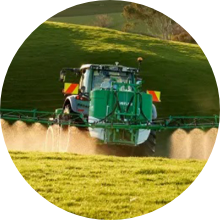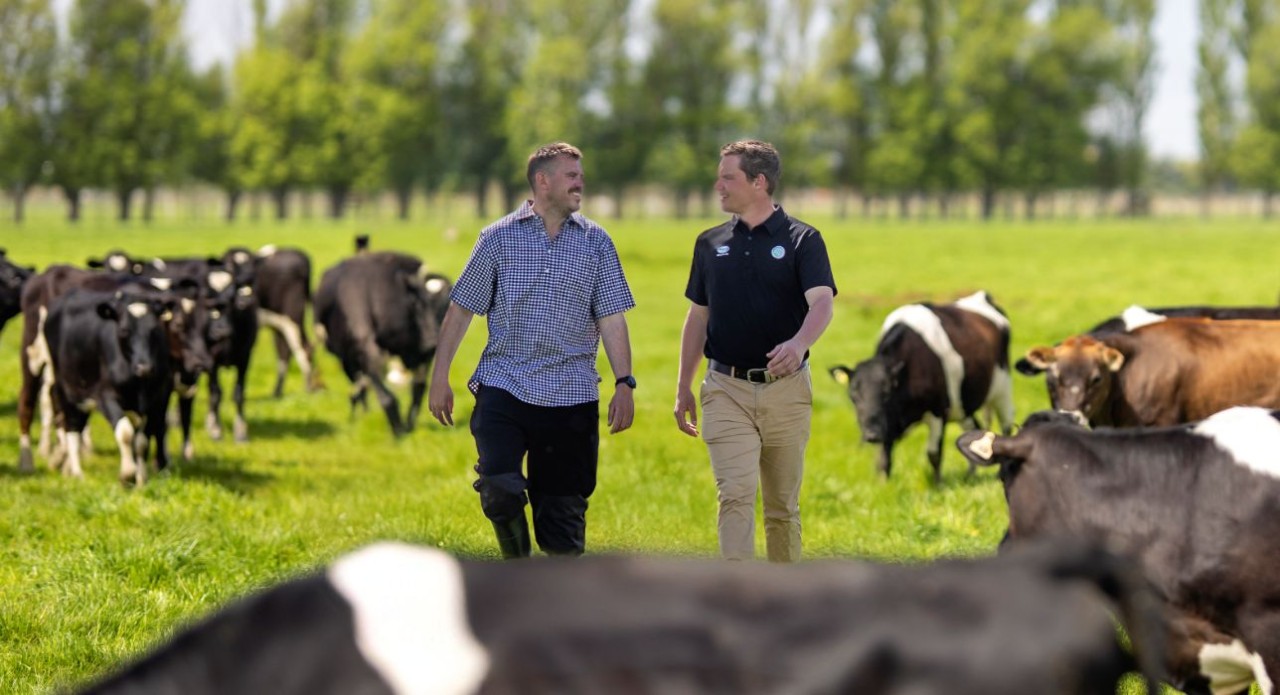Before sowing
1. If new pasture is to establish and persist, then any problems need to be addressed before sowing.
- These include compaction, poor soil condition, low soil fertility, pasture pests, weeds, and physical conditions such as poor drainage, otherwise they will continue to cause problems in the future and impact pasture production and persistency.
2. Soil fertility deficits also need to be corrected, so that the new pasture species will establish and thrive. Failure to address soil fertility will increase the likelihood of low-fertility pasture species dominating the paddock.
3. Soil test at least 6 months before sowing; if possible, 12 months before sowing.
- Pasture prefers a pH between 5.8 and 6.0. If soil pH needs adjusting, lime needs to be applied - it will take at least 6 months to have an effect on soil pH. Soil testing early also allows sufficient time to correct the nutrient levels with a suitable base fertiliser.
- Sample using a 75mm soil probe. Soil test a transect (line) across the paddock. Avoid areas that are not typical of the paddock, e.g. fence lines, stock camps close to troughs and urine patches. Samples can be collected in either autumn or spring. Do not sample within 3 months of applying fertiliser or lime, or when soil is saturated.
4. Putting a crop in before going back to permanent pasture is a good way to buy yourself some time to achieve any of the above requirements.
5. In a grass-to-grass situation, a pre-sow spray out allows you to start strong with a clean seed bed. Remove all potential competition for your new pasture varieties. In a spray-out situation, its important to make sure the pasture has at least 1.5 leaf for sufficient chemical uptake and good kill.
Get the most out of your pasture
Around 50% of the success of a new pasture is in the set up before you sow it. Time spent getting things right to start, is time well spent.
At sowing
Use a starter fertiliser at, or immediately prior, to sowing.
- Like all crops, grasses and clovers need an adequate supply of nutrients in order to grow well. If these nutrients, particularly P and N, are placed close to the seed, then seedlings will establish strongly and rapidly. Good growth and tillering during the early part of the pasture's lifecycle plays a significant role in ensuring that it meets its potential. If the renewal programme has included a summer crop, then this will have removed nutrients from the soil, so including a starter fertiliser is even more important.
- Drill fertiliser with the seed (in a separate box). Make sure there is no direct contact with the seed. Alternatively, broadcast fertiliser then incorporate into the soil just before sowing. If broadcasting, a higher application rate will be required.
Fertilise for pasture growth
Using a starter fertiliser at sowing ensures grasses and clovers receive essential nutrients for strong and rapid growth.
Post sowing
1. Pre-graze spray, 4-6 weeks after drilling, is important to ensure that weeds are addressed early, while they are small seedlings, with a product that is safe over small establishing clovers. Monitor pests as well.
2. At 4-6 weeks do the first ‘nip-off’ graze (removing 2-3 cm) as soon as the baby grass plants do not pull out of the ground. This light grazing promotes grass tillering and growth and let’s sunlight to the small clover plants at the bottom of the sward.
3. The first application of post-emergence nitrogen should go on following the first grazing, which is typically when the pasture is 5-6 weeks old. Subsequent applications of nitrogen should be made after each grazing to help with tillering.
4. If weather dependent a pre-graze spray was not possible, a post-grazing spray, 7–10 days after grazing is another option and your last chance to remove weeds while they are small with clover safe herbicides. High weed populations can limit new pasture performance and its persistence. Some weeds can aggressively compete for space, nutrients and moisture and are generally lower in energy and protein as pasture.
Control weeds early with agchem
Early preventation stops weeds from competing for nutrients, moisture, and space, ensuring optimal pasture performance and persistence.
Ongoing management
Make sure to frequently graze your new pasture as it grows fast, good pasture management will promote daughter tillers which will help make your new pasture stronger and more persistent. Frequent grazing will also allow the slower clover to establish properly in a new pasture sward.
Light applications of nitrogen on a regular basis the first 12-18 months of the new pasture's life complemented by good grazing practices will help ryegrass produce more tillers, which helps with persistence. Nitrogen also helps to speed up leaf expansion, allowing plants to compete with weeds. Nitrogen should be applied when plants are actively growing; applications should not be made if conditions are too cold or wet to support pasture growth.
After periods of pasture stress, such as wet winters - with pasture pugging, or droughts - with periodic overgrazing, pastures can open up and require some undersowing to perform at their best. Avoid spraying weeds within 1 month before undersowing as residues from phenoxy herbicides can kill germinating grass seedlings.
Get help with pasture management
Your local TSR can support you with good pasture management, effective grazing practices, recovering from pasture stress, and optimising overall pasture performance.
CONTACT US






